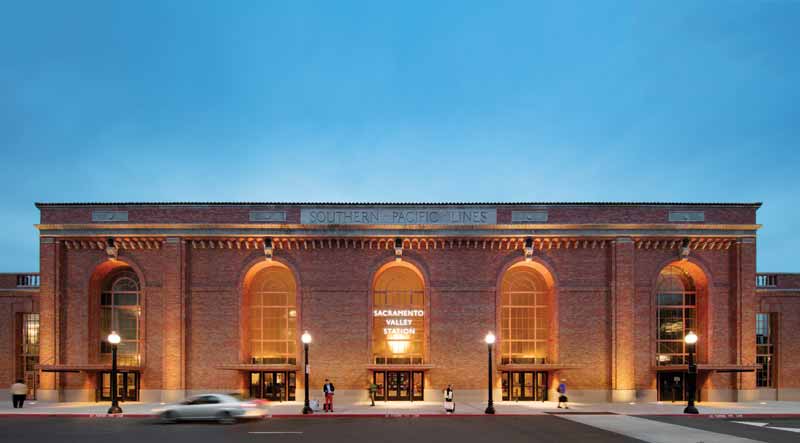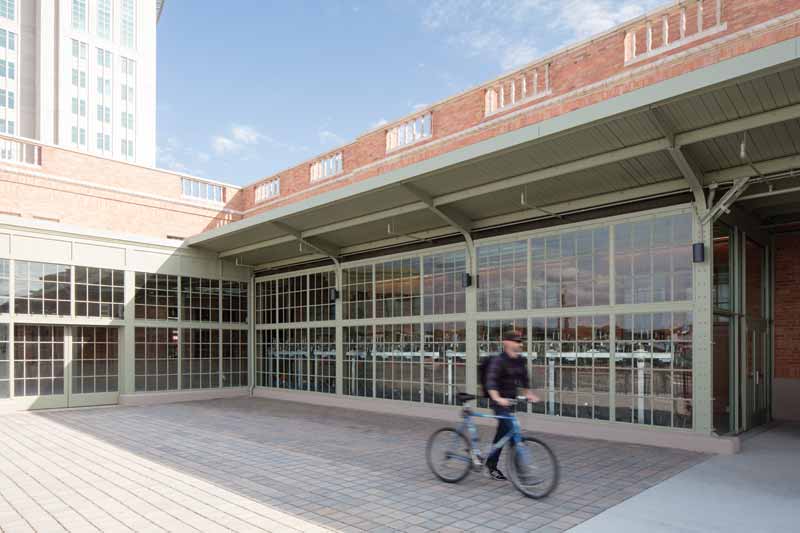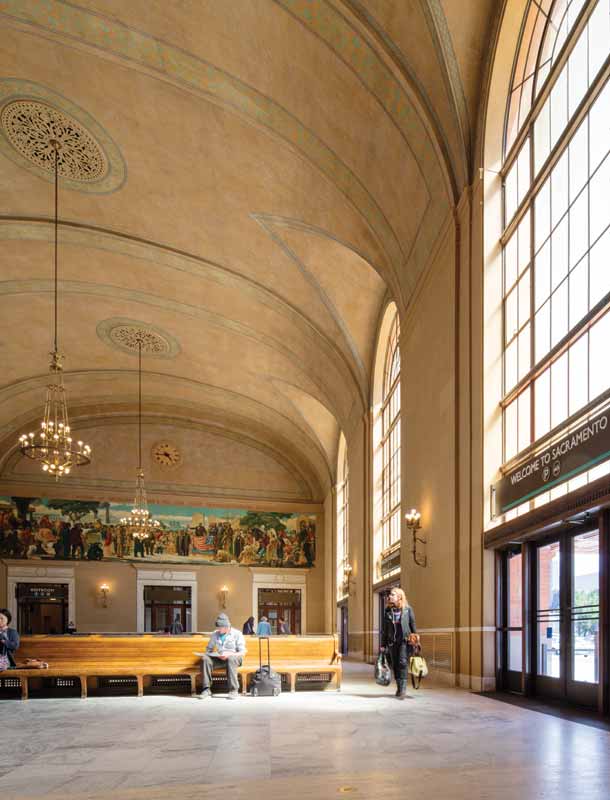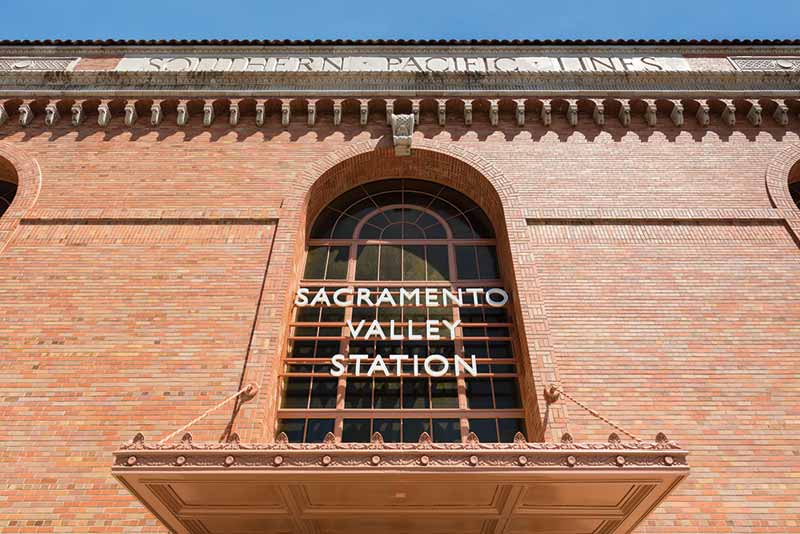
by Melisa Gaudreau, AIA
Can historic building techniques teach us valuable lessons about sustainability, comfort, and even the beauty of architecture? That’s been one essential takeaway from Page & Turnbull’s work on Sacramento Valley Station, a 1926 gem originally designed by the firm Bliss and Faville, containing an exceptional mural by artist John A. MacQuarrie.
With input from a multidisciplinary project team including the City of Sacramento, ZGF Architects, SGH, Arup, and Rudolph & Sletten, the facility has been fully rehabilitated and revived as a centerpiece of redevelopment in its Sacramento neighborhood, at a cost of $42 million. Now a mixed-use intermodal transportation facility, the reinvigorated 6317-m2 (68,000-sf) center accommodates more bicycle commuters and is primed for shops, restaurants, and even office space to lease. It is also a model of green building, tracking platinum certification under the Leadership in Energy and Environmental Design (LEED) rating program.
As preservation architect, Page & Turnbull focused on reviving the original glory of the Sacramento Valley Station, from a time when train travel was essential and often an elegant experience. The preservation and design teams valued the original Mediterranean Revival quality to building—its richness, varied paint colors, historic mural, and amber-colored glass. In addition to honoring the building materials, the pedestrian flow through the concourse needed to be reestablished in its original open-air configuration with three doorways rather than one.

The first impulse of Page & Turnbull’s architecture group was to respect the original intent of the architecture in devising a project approach. Yet, this desire was tempered by the realities of the conversion to modern standards of performance and the possible vagaries of market availability.
The main waiting room glows with its original colors, due not just to the applied finishes but also to the copious sunlight entering through amber-tinted glass panels, with their unique stippled texture. The tint, conceived by Bliss and Faville, had a specific optical effect that related to and impacted on their interior color palette, as the glass also warmed the room with its general daylight hue and blocked some glare and heat gain. The original experience, along the architects’ winsome conception of this grand public space, merited a careful review and plan for a serious revival.
Windows and glazing solution
In the project planning phase, the preservation team studied the landmark station’s history and available techniques to restore its original design while optimizing comfort and building performance. These dual goals led the specifier team to a combination of glazing solutions.
The selected methods and materials contribute to a system that not only protects the historic integrity of the station, but also meets contemporary tenant desires and fulfills key performance criteria, including aggressive reductions in energy losses related to thermal and air barrier performance of the envelope.
Amber/textured
The project restored much of the original amber-colored, stippled-textured panels of rolled glass at the station’s most prominent center window bays. The team identified a custom-manufactured matching product from the original, Indiana-based manufacturer. Their sheet glass was specified at 3.2-mm (1⁄8-in.) thickness, double rolled, with a specific amber tint.

Clear
At the two wings of the train station, a 3.2-mm clear float glass was specified for the central panes of the building’s historic steel windows, and typical amber glass was installed at the edges and spandrel. These specifications supported the use of the areas for new office tenants who would desire added daylighting (visible light transmission) and clear, unimpeded views from workplace areas.
Clear textured
At the east, west, and interior corridors, the project restored rolled, textured glass to match the extant historic glass. The glass manufacturer produced 3.2-mm panels in their proprietary style.
Clear low-e
The restoration design added secondary aluminum storm windows on the interior side of historic steel windows in tenant spaces to mitigate heat gain and provide acoustical insulation. In these cases, the team specified insulated glass units (IGUs) with low-emissivity (low-e) coatings on their number 2 surface.
Behind these selections were a number of design drivers. For example, the redesigned building would introduce radiant floor cooling and air supply, lacking in the original construction, to propel warm air upwards in the 12.8-m (42-ft) tall room and support cooler temperatures at the floor level. Improvements to the building envelope, including window systems and the addition of mineral wool and blown-in insulation at wall and ceiling cavities, contributed to the total energy savings for the facility. These also contributed to the attainment of the Optimize Energy Performance LEED credit, in support of LEED Platinum certification. In addition, the project team hoped to replicate the original design approach by Bliss and Faville in the early part of the last century, when daylight control was essential to occupant comfort and enjoyment.





